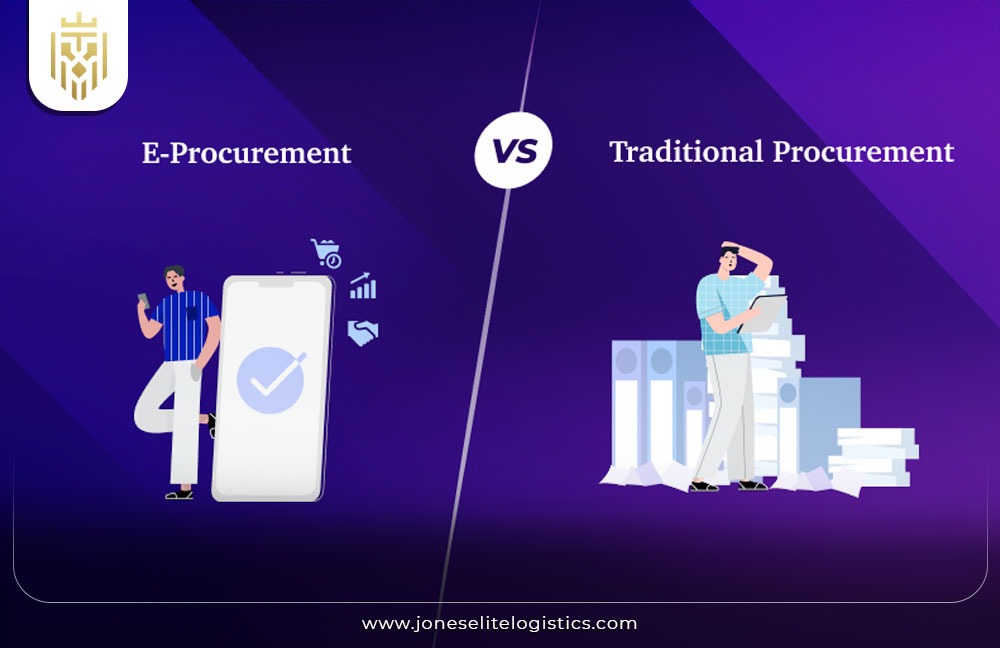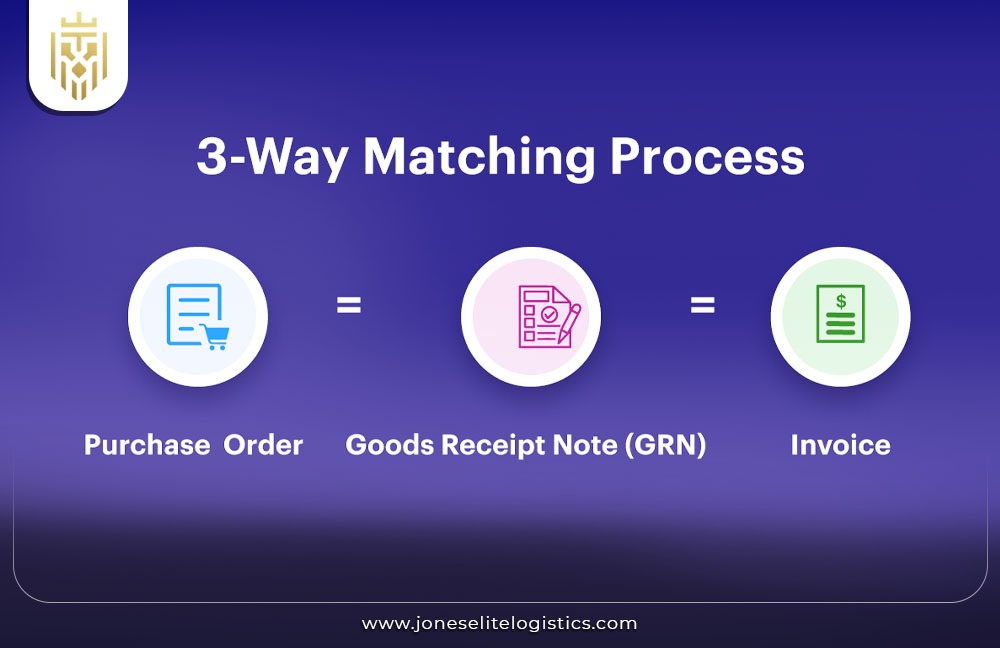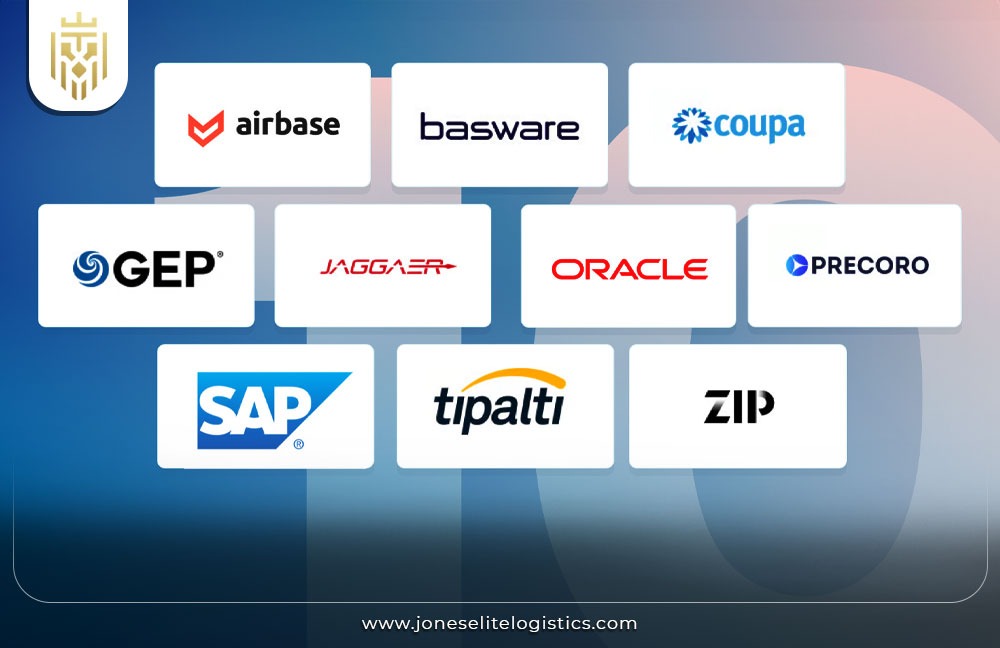What is E-Procurement?
E-Procurement refers to the digital process of procuring, ordering, and purchasing goods or services online through electronic systems. This method enhances efficiency and boosts supply chain performance by automating various steps in procurement, such as supplier selection, bidding, and payment processing.
What is an E-Procurement Supply Chain?
An E-Procurement Supply Chain involves a sequence of activities that leverage electronic systems and digital platforms to manage procurement tasks, from sourcing suppliers to making purchases. This digital integration streamlines operations, improves procurement supply chain efficiency, reduces human error, and ensures real-time data flow between parties, thereby enhancing overall supply chain performance.

How is E-Procurement Different from Traditional Procurement?
E-Procurement uses digital platforms to automate the procurement process, while traditional procurement relies on manual paperwork and communication. Additionally, e-procurement offers instant access to a wider range of suppliers and products, speeding up the decision-making and purchasing process, ultimately benefiting supply chain performance.

E-Procurement Supply Chain Process:
The procurement supply chain process begins when employees or departments initiate the procurement process by creating and submitting digital purchase requests for the goods or services. These requests are reviewed and approved within the e-procurement system, ensuring compliance with internal policies and supporting improved supply chain performance.
Identify Business Priorities:
Define key procurement needs aligned with business goals and objectives to ensure resources are obtained efficiently and support the company’s strategic direction. This alignment within the procurement supply chain helps prioritize spending and optimize resource allocation, thereby improving supply chain performance.
Generate and Submit Purchase Requests:
Employees or departments initiate the procurement process by creating and submitting digital purchase requests for the goods or services. These requests are reviewed and approved within the e-procurement system, ensuring compliance with internal policies and maintaining supply chain performance.

Evaluate Vendors:
Assess potential suppliers based on criteria like quality, cost, and reliability to ensure they can meet the company’s needs. This evaluation within the procurement supply chain helps mitigate risks and identify vendors that offer the best value and performance, contributing to enhanced supply chain performance.
Negotiate Supplier Agreements:
Establish favourable terms and conditions with selected vendors, including pricing, delivery schedules, and payment terms. A well-negotiated agreement within the procurement supply chain ensures both parties benefit and that expectations are clearly defined and managed, thus improving overall supply chain performance.

Issue Purchase Orders:
Formal purchase orders are generated and sent to the chosen suppliers, specifying the agreed-upon terms, quantities, and product or service details. This step in the procurement supply chain acts as a legal document and finalizes the agreement between buyer and supplier, ensuring smooth supply chain performance.
Receive and Inspect Deliveries:
Upon delivery, the received items are inspected for quality and quantity to ensure they meet the specifications outlined in the purchase order. Any issues or discrepancies are addressed before goods are accepted into inventory, ensuring that the procurement supply chain supports consistent supply chain performance.
Perform Three-Way Matching:
This crucial step in the procurement supply chain involves verifying that the details on the purchase order, the goods received, and the supplier’s invoice all align before authorizing payment. This ensures transparency, accuracy, and prevents financial errors, contributing to optimal supply chain performance.

Authorize Invoices and Process Payments:
After successful three-way matching, invoices are approved, and payments are processed to the suppliers. Timely payments within the procurement supply chain maintain positive relationships and can improve terms in future dealings, enhancing overall supply chain performance.
Maintain Records:
Keep comprehensive documentation of all procurement activities for auditing and analysis, ensuring that all transactions are traceable and that compliance with legal and organizational policies is maintained. Proper record-keeping within the procurement supply chain is crucial for ensuring sustained supply chain performance.
What is E-Procurement Software?
E-Procurement software is a cloud-based tool that helps companies efficiently buy and sell goods online using digital and automated processes. It streamlines procurement by automating tasks such as vendor management, order tracking, and payment processing, all of which contribute to improved procurement supply chain management and supply chain performance.

Types of E-Procurement System:
Various e-procurement systems exist to streamline and enhance procurement processes, serving different purposes for different organizations. They include:
ERP Systems:
Enterprise Resource Planning (ERP) systems integrate procurement with other business functions, such as finance, HR, and production, offering a centralized platform for managing supply chain activities. This integration enhances procurement supply chain management and overall supply chain performance by improving efficiency and visibility across departments.
Web-Based Procurement:
This system allows businesses to conduct procurement activities online through web-based platforms, enabling real-time transactions. It offers easy access to suppliers and simplifies the process of submitting and approving purchase orders, thus improving procurement supply chain management and supply chain performance.
Email Bid Watching:
A method where procurement professionals monitor and manage bids received via email, ensuring timely responses and competitive sourcing. This approach within the procurement supply chain allows for a simplified but effective way of tracking vendor offers and negotiating contracts, positively impacting supply chain performance.
E-Reverse Auctioning:
A dynamic bidding process where suppliers compete by lowering their prices to win contracts, leading to significant cost savings. E-reverse auctions within the procurement supply chain foster a more competitive procurement environment by encouraging vendors to offer their best prices, contributing to improved supply chain performance.

Advantages of E-Procurement Supply Chain:
An e-procurement supply chain offers several advantages that help businesses stay competitive and manage resources effectively, and they include:
Mitigate Procurement Risks:
An effective e-procurement supply chain helps identify and address potential risks early, such as supplier delays or market fluctuations, reducing the likelihood of disruptions and ensuring continuity in the supply chain. This proactive risk management improves procurement supply chain management and overall supply chain performance.
Centralize Management:
Centralizing e-procurement activities through a unified system streamlines processes, improves oversight, and ensures consistency in procurement practices across the organization. This centralized approach enhances procurement supply chain management and boosts supply chain performance by reducing redundancies and ensuring compliance with procurement policies.
Improve Supplier Relationships:
A well-managed e-procurement supply chain fosters strong, collaborative relationships with suppliers, leading to better terms, reliability, and quality. By maintaining open communication and timely transactions, companies can build long-term partnerships that benefit both parties, thus improving overall supply chain performance.
Organized Data:
Efficient e-procurement systems organize and store data systematically, making it easier to track spending, analyse trends, and make informed decisions. This organized data within the procurement supply chain provides actionable insights for cost-saving opportunities and enhances supply chain performance.
FAQs
1) What is E-Procurement?
E-Procurement refers to the digital process of procuring, ordering, and purchasing goods or services online through electronic systems. This method enhances efficiency by automating various steps in procurement, such as supplier selection, bidding, and payment processing.
2) What is an E-Procurement Supply Chain?
An E-Procurement Supply Chain involves a sequence of activities that leverage electronic systems and digital platforms to manage procurement tasks, from sourcing suppliers to making purchases. This digital integration streamlines operations, reduces human error, and ensures real-time data flow between parties.
3) What are the steps in an E-Procurement Supply Chain?
The steps are: Identify Business Priorities, Generate and Submit Purchase Requests, Evaluate Vendors, Negotiate Supplier Agreements, Issue Purchase Orders, Receive and Inspect Deliveries, Perform Three-Way Matching, Authorize Invoices and Process Payments, and Maintain Records.
4) What are the advantages of the E-Procurement Supply Chain?
The advantages are : Mitigate Procurement Risks, Centralize Management, Improve Supplier Relationships, and Organized Data.







